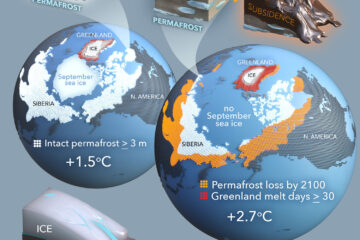Salmon carcasses influence genetic linkages between forests and streams
Biodiversity at many scales (functional group, species, genetic) can result in emergent ecological patterns. Here we explore the influence of tree genotypic variation and diversity on in-stream ecosystem processes and aquatic communities. We test whether genetically diverse inputs of leaf litter interact with a keystone organism, anadromous salmon, to influence in-stream ecosystem function. We used reach-level manipulation of salmon carcasses and leaf litter bags to examine how nutrient inputs interact with genetic variation in leaf litter decomposition. Genotypic variation in black cottonwood (Populus balsamifera ssp. trichocarpa) significantly influenced leaf litter chemistry, litter mass loss, and fungal biomass, but these variables were only weakly influenced by salmon carcass presence or a genotype × salmon (G × E) interaction. Mixtures of genotypes tended to demonstrate antagonistic effects (slower than expected decomposition) in the absence of salmon, but synergistic effects (faster than expected decomposition) when salmon were present. Our findings suggest that the influence of plant genotypic variation in linking aquatic and terrestrial ecosystems may be altered and in some cases intensified in the presence of a keystone vertebrate species.


